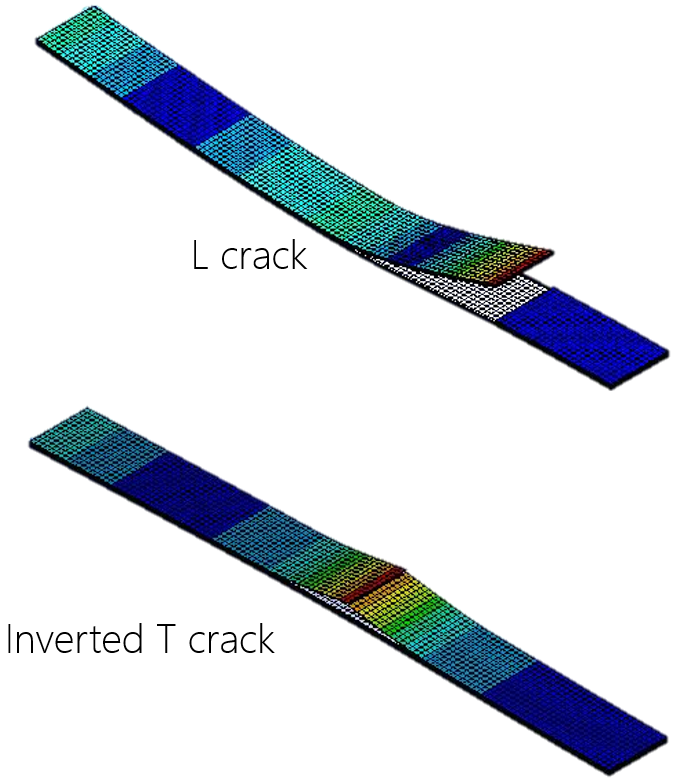
Master's Thesis
Project: Modeling and Detection of L and Inverted T Cracks in Laminated Euler-Bernoulli Composite Beams using Natural Frequencies
Guide: Prof. S.K. Maiti, G.K.Devarajulu Chair Professor, Department of Mechanical Engineering, IIT Bombay
The aim of this project was to develop a non-destructive technique to detect L and Inverted T shaped cracks in laminated composite beams.
Composite materials are becoming very popular owing to their excellent strength to weight and stiffness to weight ratios. However, suitable health monitoring techniques are required to safely use the composite materials. Several studies have dealt with the problem of modeling and detection of the parameters of edge cracks and delaminations parallel to fibers in laminated composites. However, in practice, the edge crack perpendicular to the fibers can split and give rise to longitudinal crack(s), thus making the overall shape of the crack as 'L' or inverted 'T'. This is especially true for laminated composites with edge crack perpendicular to the fibers, since they are much more resistant to in-plane crack extension as compared to inter-lamellar crack extension. Hardly any work was done to model or detect these cracks in laminated composites. Thus, there was a requirement of a suitable non-destructive technique to detect these cracks.
For the development of the non-destructive technique, the vibration based techniques appeared to be quite promising because they were cost-effective, and required access to only one point of the part.
Accordingly, I
developed the analytical model for predicting the natural frequencies of a cracked beam given the location and size of the crack. To verify these frequencies, they were compared with the frequencies obtained from Finite Element Methods.
The Ansys Composite PrepPost (ACP) add-on of Ansys Workbench was used for modeling the cracked composite beams. The frequencies predicted by the analytical model were more than 85% accurate.
Using the Analytical model, I solved the inverse problem of predicting the location and size of the crack, given the natural frequencies. The traditional graphical approach was used first, which required an input of both
the frequencies of both the cracked and intact beams. Later, a Genetic Algorithm based technique was used which required the input of just the frequencies of the cracked beam. Both the methods predicted the
location and size of the crack with more than 75% accuracy.
Y. Sanghvi and S. Maiti, "Modeling and Detection of L and Inverted T Cracks in Laminated Composite Beams using Natural Frequencies" to be presented at 5th International Conference on Mechanics of Composites (Instituto Superior Técnico, Portugal), July 1-4, 2019
This project gave me my first experience of pulling off a year-long project individually. This project significantly sharpened my research skills and being advised by the most experienced faculty member in the Mechanical Engineering department of IIT Bombay certainly helped in this regard. I learnt how to effectively perform a literature survey and pick out the most relevant papers for study. I also learnt about the scientific method: stating a hypothesis, devising experiments to verify it and modifying the hypothesis or accepting/rejecting it based on the findings of the experiment. This especially helped when I encountered an anomalous pattern in the natural frequencies of the cracked beams in certain configurations. Finally, through effective thesis and paper writing practices, I learnt how to showcase my work to the scientific community.